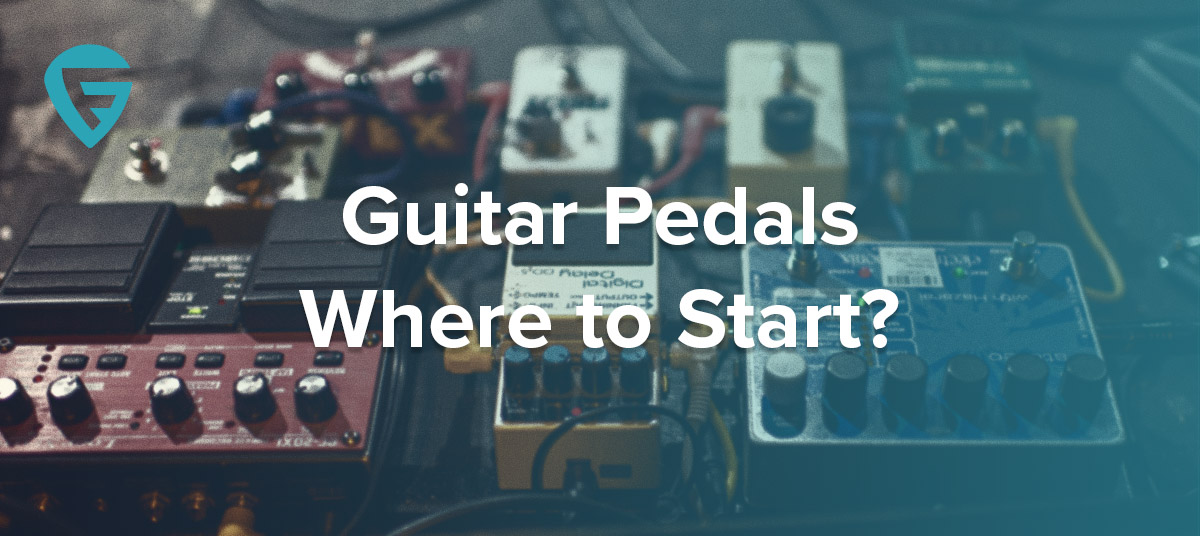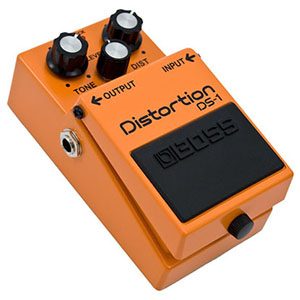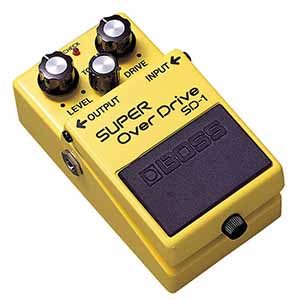- Home
- Instruments
- Gear
- Recording
- Lessons
- Reviews
- Blog

If you are new to guitars, and you have just reached a level of skill that allows you to play comfortably, you are probably starting to wonder about the ways you can alter your guitar's tone. This is where guitar effects pedals come into play.
These devices have been around for a while now, and guitar players around the world are using them every day to achieve different types of tone.
The question is, where to start? What should be your first pedal, and where to go next? Answering this question is going to be the subject of our little talk today.
 Distortion or overdrive pedals are by far the most popular choice for a first effects pedal. The reason for this is quite simple. Most new guitar players are looking to spice up their tone with a quality distortion their amp probably can't deliver.
Distortion or overdrive pedals are by far the most popular choice for a first effects pedal. The reason for this is quite simple. Most new guitar players are looking to spice up their tone with a quality distortion their amp probably can't deliver.
There are many different types of distortion and overdrive pedals on the market. Some are more aggressive while others are pretty subtle. If you'd like to know which ones are among the most recommended distortion pedals out there, click here and check out our list of good and recommended guitar effects.
One thing to keep in mind is that there is a very significant difference between distortion and overdrive pedals. Overdrive effect is designed to replicate what happens when you push a tube amp to the edge of its abilities. Any tube amp being used under such conditions will start to distort the signal lightly.
 Overdrive is generally the softest type of distortion you can get. Actual distortion pedals are a lot more saturated and come with a much wider band of gain available. In simple terms, if you want to play blues or rock, overdrive is going to work the best. Anything more aggressive such as metal, and you are entering distortion pedal territory.
Overdrive is generally the softest type of distortion you can get. Actual distortion pedals are a lot more saturated and come with a much wider band of gain available. In simple terms, if you want to play blues or rock, overdrive is going to work the best. Anything more aggressive such as metal, and you are entering distortion pedal territory.
After distortion/overdrive pedals, people generally tend to get some sort of reverb or delay. Just like distortion pedals, delays and reverbs make the most noticeable change in your tone. Once you are comfortable and familiar with these two pedals, your next pick will depend on your taste and what kind of tone you are looking for.
At this point, you are already building a more complex signal chain. This is also where you need to start thinking about the order of your guitar pedals. If you want to know more about this topic, check out our guide which shows you a good basic signal chain configuration.
One of the best things about playing electric guitar is the fact that you have so much creative freedom at your disposal. You can literally create an endless amount of guitar tone variations. With that said, there is nothing simple about this.
Some of the most talented and popular guitar players in the world today are still rearranging their pedals from time to time, trying to find a better solution and a better guitar tone. The most important thing about working with guitar effects pedals is patience. You want to take things slow, and add one pedal at a time.
Once you reach a decent number of pedals, it's quite easy to get lost in all of the controls. If you add one pedal at a time, you are allowing yourself to get to know that pedal and the type of effect it offers. With some effort and a lot of experimentation, you will soon create a signal chain that is probably going to be unique and perfect for your taste.

Reader Interactions